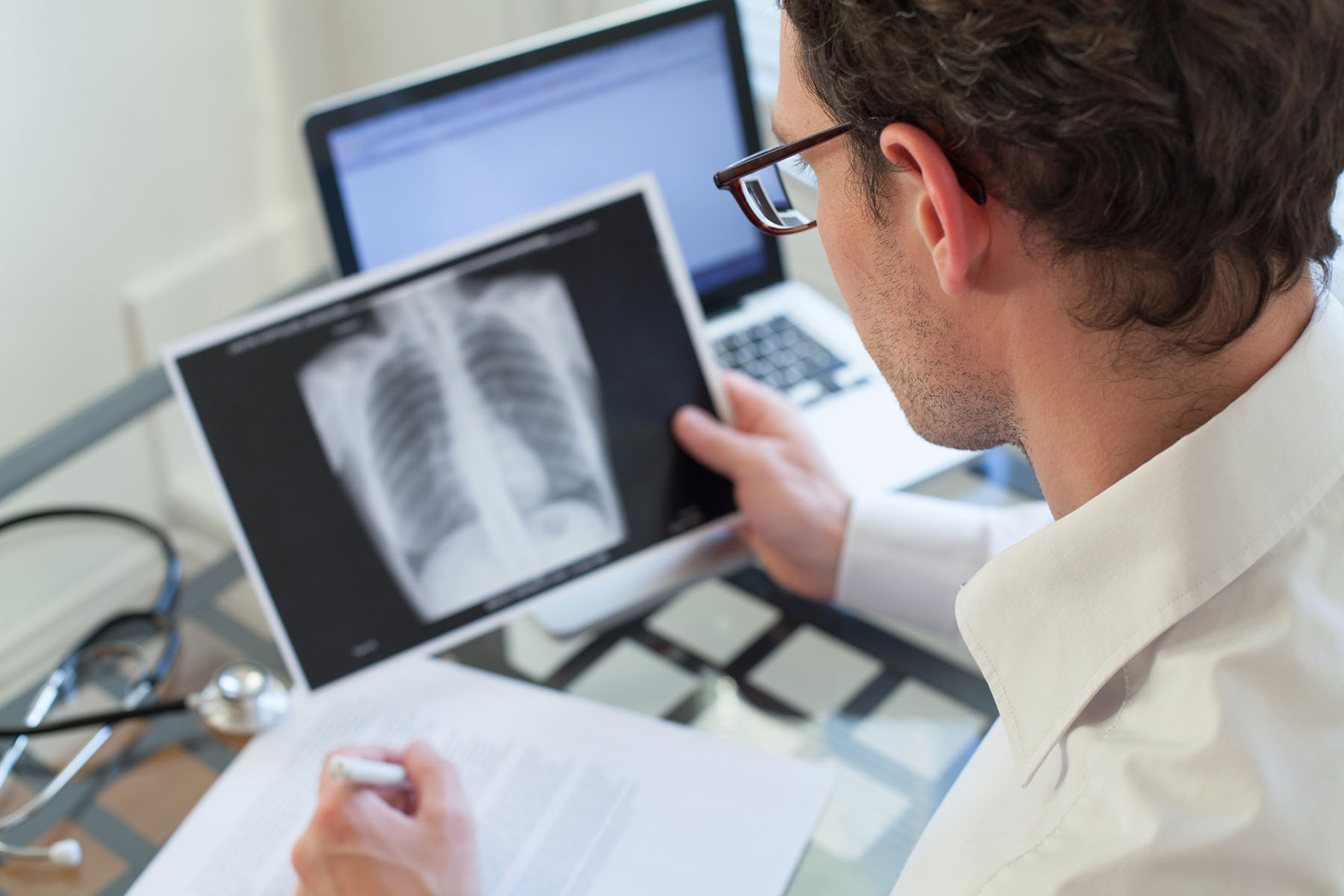Lung Cancer Screening: Detect it Before Physical Symptoms

Think of the deadliest cancer. It leads to more deaths than the second, third, and fourth-place finishers combined. Then consider the disturbing fact that few people who qualify for screening for this type of cancer actually do it.
The American Lung Association estimates that about 8 million Americans are considered at high risk for lung cancer and are recommended for screening. If half of these adults were screened, more than 12,000 lung cancer deaths could be prevented.
“There’s not a lot of publicity around the screening, so people don’t know about it,” says Nestor Villamizar, M.D., a thoracic surgeon and lung expert at Sylvester Comprehensive Cancer, part of the University of Miami Health System. “Our goal is hopefully to get it as well-known as a mammography or a colonoscopy.”
Why is lung cancer so deadly?
About 228,820 new cases of lung cancer are expected to be diagnosed in 2020, according to the American Cancer Society. The organization estimates about 135,720 lung cancer deaths this year alone. It is the second most common cancer after breast in women and prostate in men. Yet lung cancer has beat out breast cancer as the deadliest cause of cancer-related deaths in men and women, and more people die of lung cancer each year than of colon, breast, and prostate cancers combined.
“Part of the issue,” Dr. Villamizar, says, “is that it’s hard to detect. It also tends to be quite aggressive and metastasize faster [than other cancers].”
Studies show that as many as 80% of patients with a pulmonary nodule (or spot) one centimeter or smaller live at least five years past the diagnosis. In comparison, that rate of survival plummets to less than 20% when all patients with lung cancer, including those with larger, fast-growing nodules, are accounted for.
By the time patients show up to their doctors complaining of chest pain and shortness of breath, “it is usually in an advanced stage,” making treatment more difficult. Though lung cancer has no symptoms in its early stages, signs of advanced disease can include a chronic, hacking cough with bloody mucus, recurring respiratory infections such as bronchitis or pneumonia, hoarseness, fatigue, loss of weight and appetite, trouble swallowing, even swelling of the neck and face.
How dangerous is smoking?
“Smoking is the number one risk factor,” Dr. Villamizar adds, “and while there are others, like environmental exposure, they don’t play as big a role. I can’t stress enough the importance of not smoking.”
Smokers are 25 times more likely to develop lung cancer or die from the disease than non-smokers. The number of cigarettes and the number of years spent smoking also ups that risk. But it’s never too late to quit. Lung tissue can slowly repair itself if you stop smoking before cancer develops, Dr. Villamizar says.
Smoking is so dangerous that it plays an outsized part in determining who should be screened for lung cancer. In fact, screening is reserved for those who are at the greatest risk of developing lung cancer, namely current heavy smokers and former heavy smokers who have quit within the past 15 years. Heavy smokers are those with a smoking history of smoking a pack a day for at least 30 years, or two packs a day for 15 years, or three-quarters of a pack a day for 40 years.
Both Medicare and private insurers pay for current and former smokers 55 and older to be screened.
The only difference between the two is that Medicare will pay for annual screenings up until the patient turns 77 years old, while private insurance extends the cutoff to 80 years of age. The U.S. Preventive Services Task Force recommends that screening should continue until age 80 or until a patient develops a serious health condition that limits the benefit of screening.
Other causes of lung cancer
Dangerous environmental exposures that can lead to lung cancer include secondhand smoke, radon gas, asbestos, arsenic, and some kinds of silica and chromium. A family history of lung cancer, particularly if parents or siblings have had it, should also be regarded as a red flag. People who have been exposed to environmental factors or suffer from chronic obstructive pulmonary disease (COPD) are also good candidates for lung screening.
Early detection at Sylvester Comprehensive Cancer Center
As with other cancers, early detection of lung cancer is critical. Smaller cancerous growths are more readily treated and cured before they metastasize to other parts of the body.
A scan is pretty accurate in detecting an abnormality, even if it doesn’t let you know if it’s cancer. It’s the best place to start.
Dr. Villamizar
Sylvester’s lung cancer screening program is designated as an American College of Radiology (ACR) Lung Cancer Screening Center, which means the program meets the requirements of the ACR’s lung cancer screening committee. The designation is awarded only to those providers who offer effective and safe diagnostic care. To receive the designation, Dr. Villamizar adds, the program had to undergo a rigorous assessment of screening protocols and offer multidisciplinary follow-up care for patients, from counseling to smoking cessation programs.
In addition to being a seal of approval, the ACR’s special designation enables Sylvester to receive Medicare CT lung cancer screening payments, an important factor as many patients tend to be older.
What happens when lung cancer is found?
If a scan shows a spot (or pulmonary nodule), the steps to be taken can vary depending on the size and characteristics of the nodule. A physician may opt for monitoring or order more tests. Some studies have shown that as many as half the people who undergo screening have one or more nodules. But, those spots can also point to other health problems typical of long-time smokers, such as emphysema and hardening of the arteries in the heart. The nodules may also be scars from lung infections or benign growths. However, it’s also important to note that about 40% of these spots turn out to be cancerous.
If the spot is small, Dr. Villamizar usually suggest another CT scan in a few months to detect any lung nodule growth, which usually signals cancer. On the other hand, a large nodule (1 to 2 cm, for instance) is more likely to indicate cancer. This then requires other procedures for confirmation, including a biopsy or a PET (positron emission tomography) scan.
Do you qualify for lung cancer screening?
*Updated October 2020 by Dana Kantrowitz, a contributor to UMiami Health News.

Ana Veciana-Suarez, Guest Columnist
Ana is a regular contributor to the University of Miami Health System. She is a renowned journalist and author who has worked at The Miami Herald, The Miami News, and The Palm Beach Post. Visit her website at anavecianasuarez.com or follow @AnaVeciana on Twitter.
Tags: Ana Veciana Suarez, Dr. Nestor Villamizar, lung cancer, Ophthalmology
